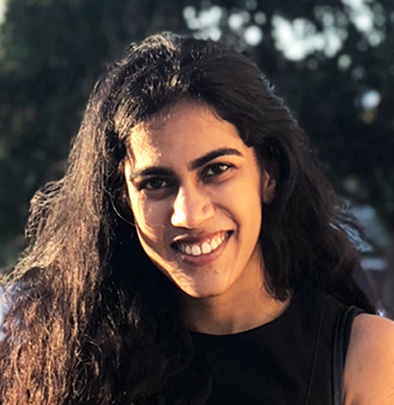Mid-day Meal Scheme : How India feeds 115 million children every school day
by Vedika Tibrewala
Jan 19, 2021
4 min
Over the years, India’s Mid Day Meal program has capitalized on improvements in the digital infrastructure in the country to incorporate systems that enable real-time monitoring and quality checks. Learn more about this flagship initiative
In India, 115.9 million children from vulnerable segments receive cooked meals every school day through the Mid-day Meal Scheme (MDMS). The MDMS is the flagship school-based meal program of the Government of India (GoI). It started in 1925 in Madras (now Chennai) to end classroom hunger. The scheme has a twofold objective of increasing student enrolment and attendance while improving nutrition. Since then, the MDMS has evolved in terms of coverage, benefits, and implementation. Today, it counts among one of the more successful programs of the GoI.
The MDMS covers all primary and upper primary students (classes 1-8) who study in government and government-aided schools, and EGS or AIE centers including madrasas and maktabs. Children in primary classes receive 450 calories and 12 grams of protein per meal, while upper primary children receive 700 calories and 20 grams of protein.
MDMS is a centrally sponsored scheme (CSS). Two committees at the national level, the Empowered Committee under the Ministry of Human Resources and Development (MHRD) and the Steering and Monitoring Committee, under the Department of School Education and Literacy, administer the MDMS. These committees are responsible for the overall direction of the MDMS, including program design, components, budget allocations, and monitoring process.
The MDMS has many components. Most are delivered to the schools as highlighted in the following graphic. The government provides food grains in the form of wheat and rice alongside LPG connections to schools. It also makes several transfers to bank accounts to reimburse schools for costs associated with cooking, procurement, or replacement of kitchen implements, and construction or repair of school kitchens.
Kitchen helpers cook and serve the meals to the children. The national mandate instructs that kitchen helper receive an honorarium of INR 1,000 (USD 14) per month deposited directly into their bank accounts. States are also permitted to top up these amounts. For instance, Kerala pays each kitchen helper INR 9,000 (USD 118) per month while Tamil Nadu pays them INR 10,083 (USD 133) per month. Additionally, students have started receiving a Food Security Allowance if their school cannot provide MDM daily.
The state governments also receive a fee for monitoring, management, and evaluation (MME) from the central government. The state-level committees use this transfer to ensure adequate monitoring by the district- and village-level committees and run digital monitoring mechanisms, such as the Automatic Monitoring System and Management Information System.
Most components of the MDMS were revised in 2019 when the government released new policy guidelines for MDMS and added additional components. This is evident in the increased allocation for MDMS in the Union Budgets. The budget allocation increased from INR 99 (USD 1.3) billion in 2018-19 to INR 121 (USD 1.59) billion in 2019-20 and INR 110 (USD 1.47) billion in 2020-21. In 2018-19, 90% of the funds available for MDMS were utilized.
The MDMS has capitalized on the improvements in digital infrastructure in India to incorporate an Automatic Monitoring System (AMS) and Management Information System (MIS). Both are used to monitor the scheme in real-time. The AMS allows schools to report the number of children that avail the MDMS each day. This facilitates monitoring and follow-up at the state or district level at no cost to the schools. Under the AMS, states have set up different systems for data collection, which includes Interactive Voice Response Systems (IVRS), SMS, mobile applications, or web applications. The data is aggregated at the state level in a predefined format and is uploaded to the MIS on a real-time basis. The MIS portal captures information on several important parameters of MDMS on both a monthly and annual basis.
Evidence shows that MDMS has had a positive impact on enrolment, and increased attendance and retention rates of students. According to some reports, students who receive MDM have shown a significant increase in classroom attention. This affirms that MDMS is well on its way to achieving its first objective of larger attendance and enrolment. However, it remains a long way from achieving its second goal of improving nutrition, as current practices have proven short of having any significant nutritional impact. There is a need for innovation and ideation on novel methods to improve MDMS. Work is already underway on this. Many Indian states have incorporated new interventions as state guidelines that have been furthering the impact of the MDMS are not only improving nutrition but also enhancing other areas.
References
Data taken from the MDMS website as of the year 2018-19.
This is equivalent to grades 1 to 8 in the American Education System.
Education Guarantee Scheme/ Alternative and Innovative Education Centers
CSS are implemented by state governments. The central government, however, is the larger funder while states fund a smaller share. In the case of MDMS, the fund sharing ratio is 60:40.
The graphic highlights each of the components transferred to schools from the government. The quantum of each is also mentioned. Read more about plinth rates here.
LPG is Liquefied Petroleum Gas used for cooking.
We have assumed a conversion rate of USD 1 = INR 75.
Food security allowance is not a novel concept but has never been used before 2020. The first time the GoI is using it is at a time when schools have been shut since March, 2020 due to COVID-19. The state governments have been asked to transfer the food security allowance to the children.
These parameters include category-wise enrolment, details of the teachers, details of the kitchen-helpers with social composition, availability of infrastructural facilities, such as kitchen stores and kitchen implements, mode of cooking, drinking water, and toilet facilities.
Written by

 by
by  Jan 19, 2021
Jan 19, 2021 4 min
4 min
Leave comments